

Angie over at gnomeangel kindly left me a comment about some of her favorite mosaics in Australia. The one above, The Hall of Memory, is at the Australian War Memorial, created by mosaic artist Mervyn Napier Waller over a series of 20 years beginning with the dome in memory of WWI, ending with portraits of soldiers in a WWII Memorial. Waller’s story is very moving, as he was an artist who served in World War I, and after being wounded in battle, had to have his right arm amputated. He learned to draw with his left hand, and went on to study stained glass in Europe and England, and mosaics in Italy.
The second mosaic recommended by gnomeangel is Harold Freedman‘s Legend of Fire Mosaic, Eastern Hill Fire Brigade’s headquarters and museum in Albert Street, East Melbourne. The mural required over a million mosaic tiles, and is 5 floors high. Freedman used his studio as a workshop for young artists, some of whom went on to design their own murals.
gnomeangel’s blog was a delight to discover, with her eye for color, handmade beauty, and good music. She is a woman after my own heart with both Billy Bragg, and The Boom Town Rats. I’m glad she decided to share some mosaics with me!
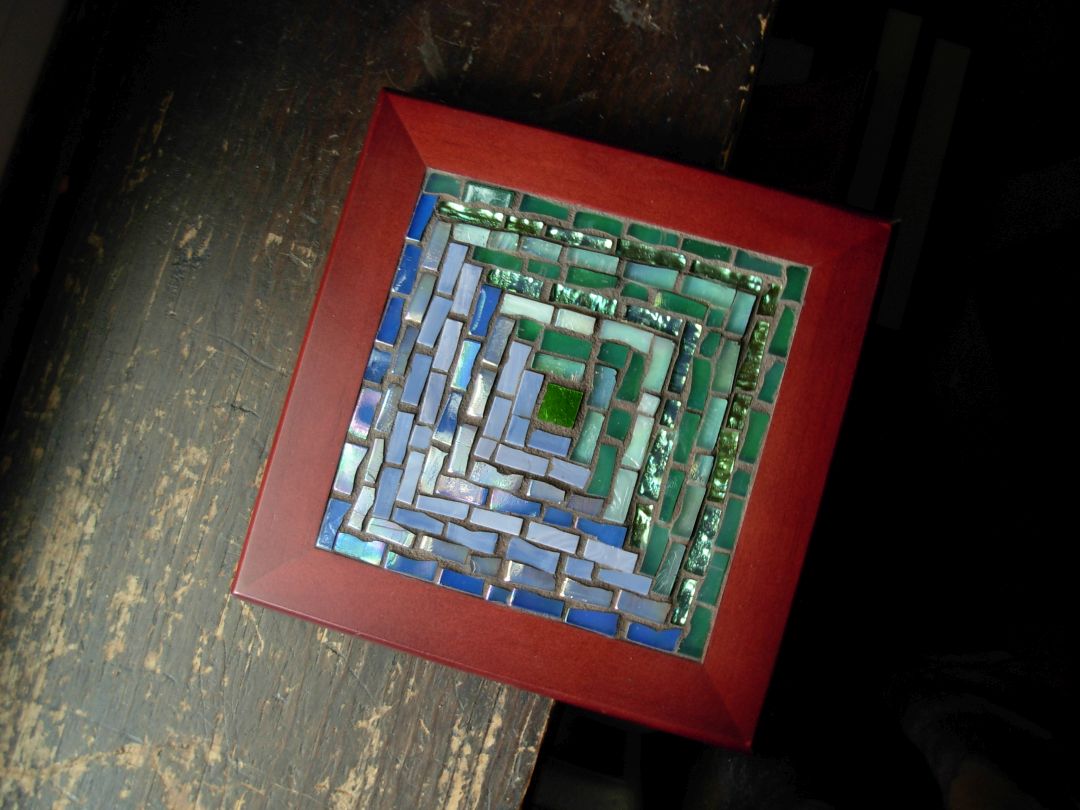
Deciding to make quilt patterns in glass was one of the most exciting choices I’ve made as a mosaic artist. The Log Cabin block in particular brings out my creativity and allows me to play with color. The challenge of making scrap quilts gives me a good springboard for my own mosaics made of scraps of glass. Stratoz creates a lot of glass bits in his studio, and I love putting them to good use.
Quilters also quite adept at blogging and I’d like to share some of my favorite quilt bloggers. They are a storehouse of creative energy.
There is so much history encoded in different fabrics, and Barbara Brackman provides fascinating detail, and always has photos. I especially enjoyed the Perkiomen Valley Patch, as I live very near the Perkiomen Valley in PA.
Lisa Call: Contemporary Textile Art
Lisa Call says she creates vivid geometric abstract contemporary quilts. I feel a kinship to her experimentation with color and her passion for her art. She has an interesting post about working in a series, and the permutations the theme takes.
John Hopper writes about every imaginable textile from quilts to embroidery to macrame! I’ve learned a lot from his meticulous research and writing. He highlighted a contemporary quilt artist Paula Nadelstern and her cool kaleidescope quilts.
Sew On and On: My Joyful Journey Through Arts and Life
Valerie Kamikubo populates her blog with visual treats, and her observations about art and creativity. The colors in her post of dyeing fabric are very vibrant.
Planet Textile Threads(link currently not working)
Further Reading
Beautiful Thrift: Coin Quilt Patterns in Mosaic
Making a Variable Star Mosaic: Ohio Star
Over at Stratoz:
7 for the Weekend–Celebrating a 2009 Quilt Show
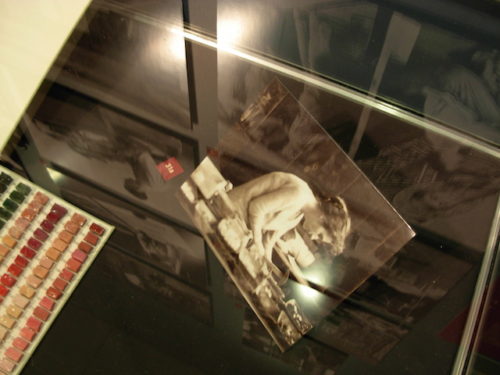
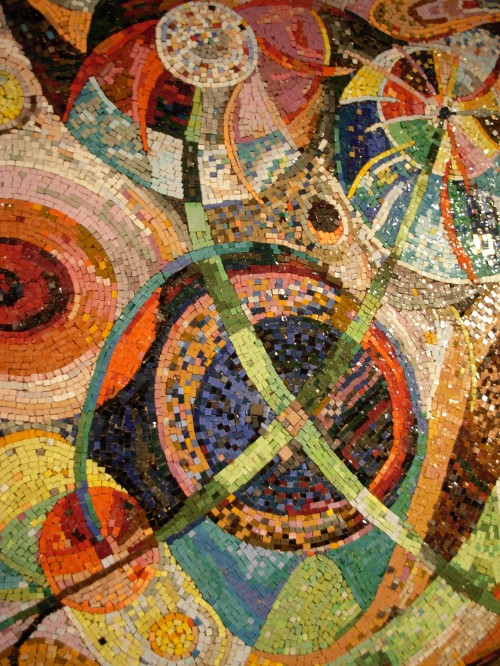
As a bonus to going on my Hildreth Meiere pilgrimage in March, I was introduced the work of Gabriella Polony-Mountain in the Regina Quick Center for the Arts collection. I had never heard of her, and was glad I discovered her work. She was born in 1918, and just in 2009 at age 91, had a first comprehensive showing of her work in Kansas City where she lived for many years after emigrating from Hungary.
Polony-Mountain takes a journey with a journalist to the sites of many of her Kansas City works of art, including a mosaic panel, in pristine condition, hidden behind a mirror in an apartment building lobby. A resident of the building describes her relief that mosaic has reemerged, since she remembered seeing it as a child, and then moved into the building as an adult and it was gone. Much of Polony-Mountain’s work is yet to be found. Fortunately, the Quick Center has mosaics, stained glass, and copper repousse doors.
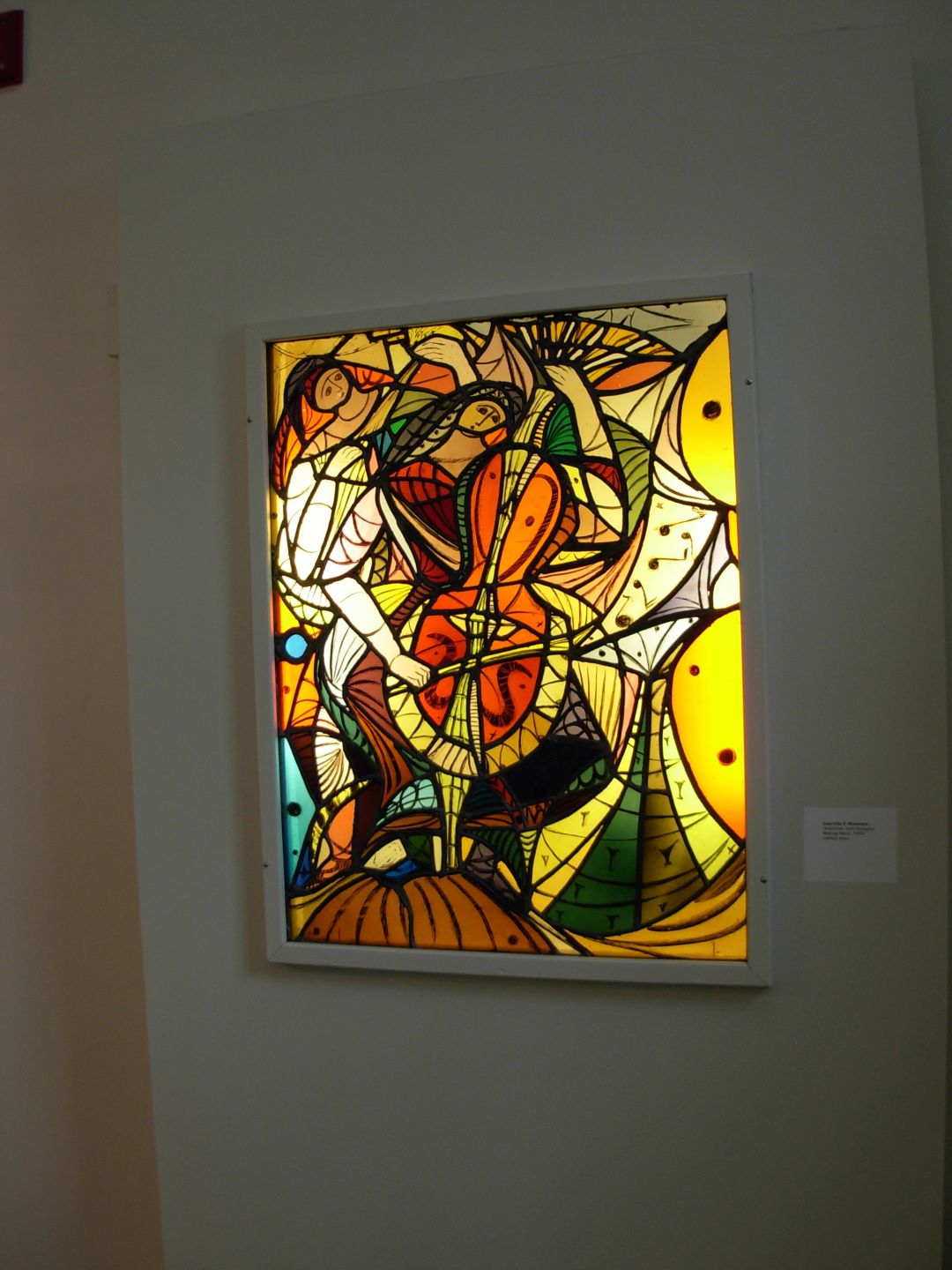
The very first piece was a work of stained glass, Making Music, by the entry, followed by an interpretation of the same theme in mosaic. In the same space, there is a magnificent set of copper repousse doors, with a Guardian Angel on the left side, and a Fallen Angel on the right side. When her name appeared as the artist for these as well, I was amazed by her many talents, and glad to see its manifestations in one place.
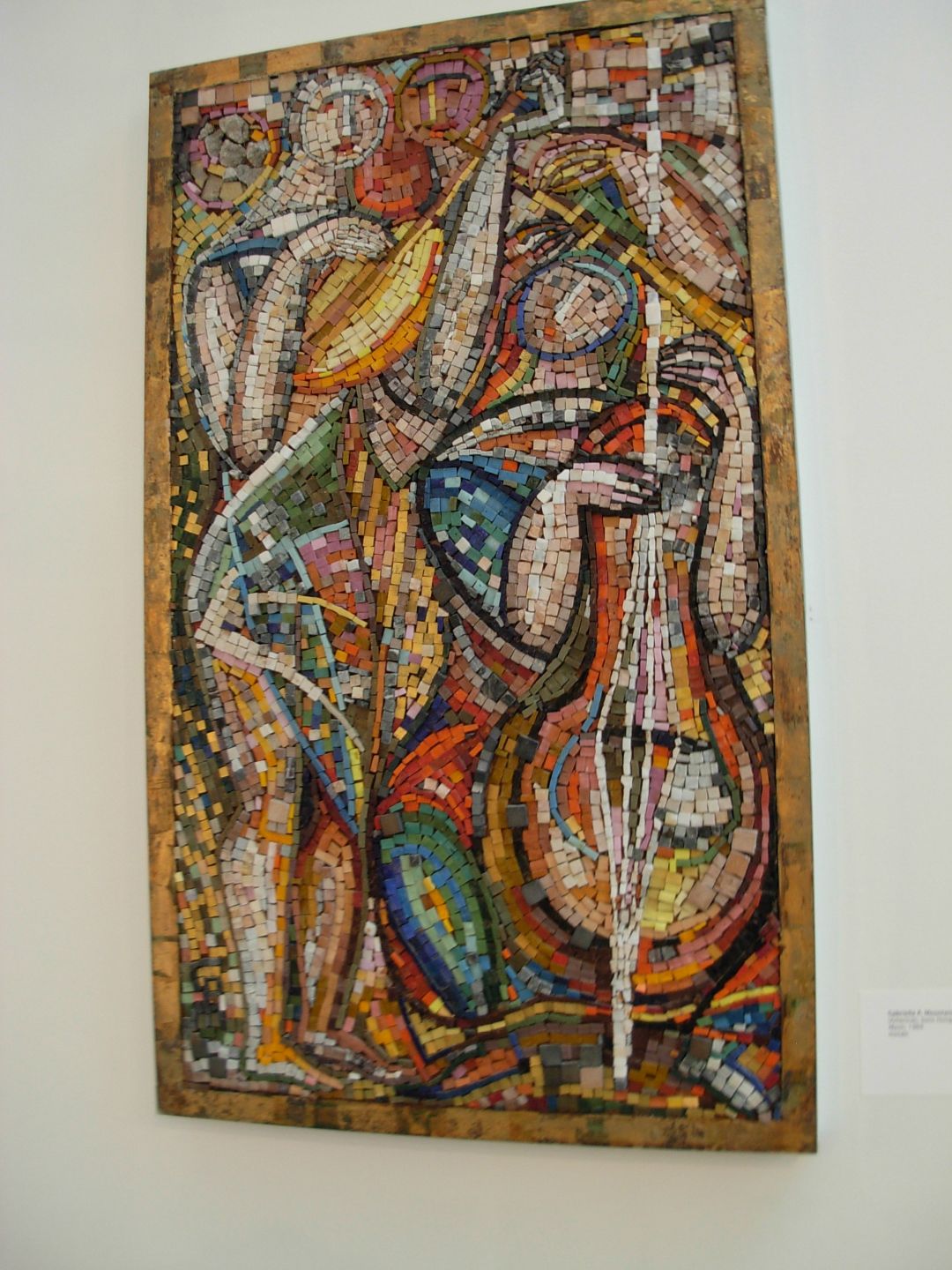
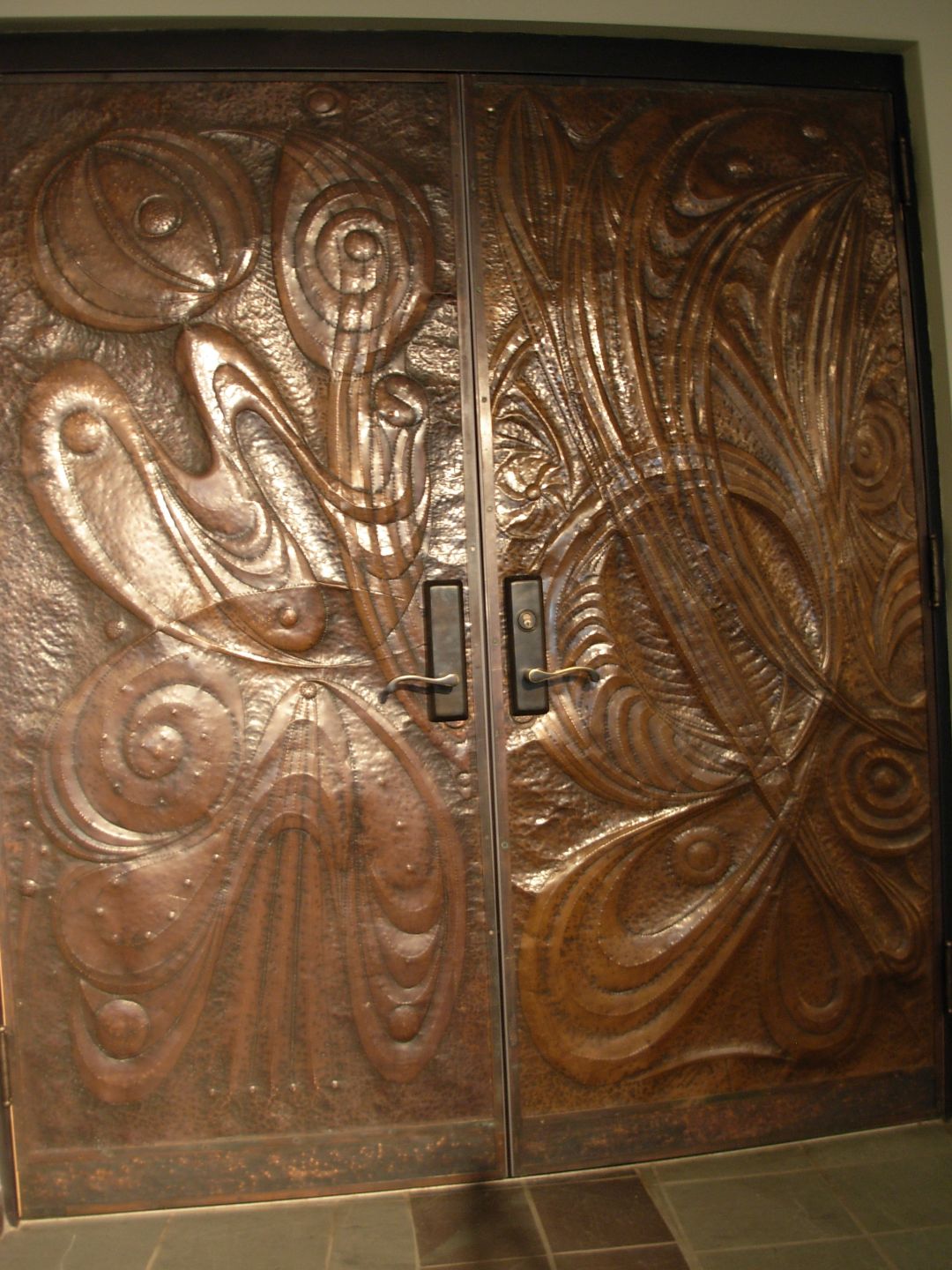
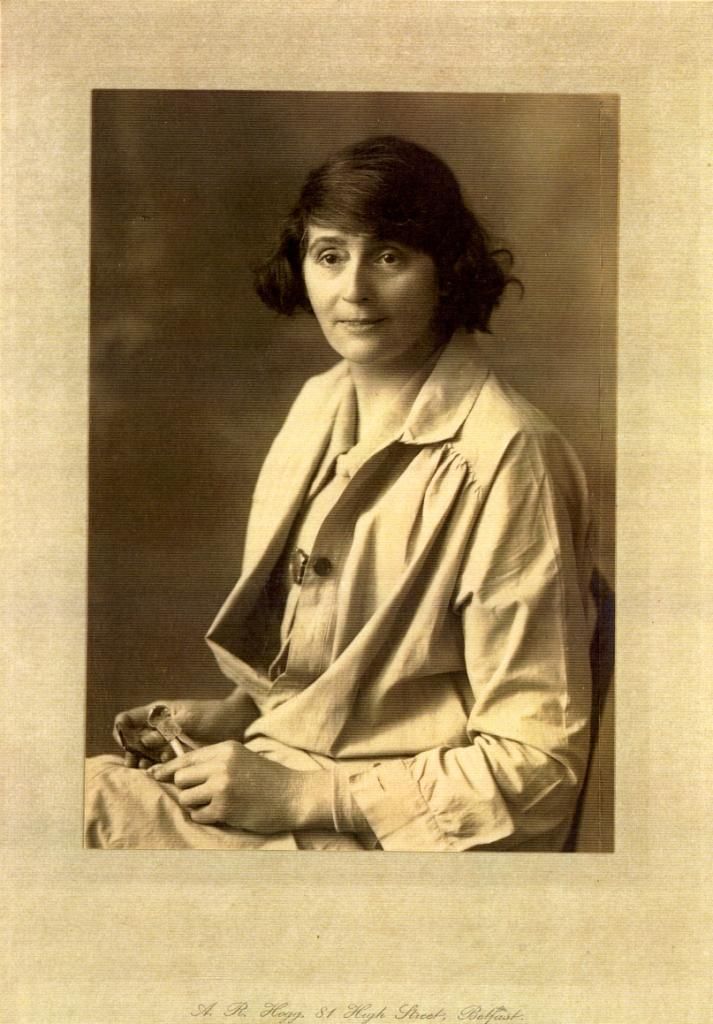
Gertrude Martin and her sisters made this mosaic at the Chapel of the Holy Spirit at St. Anne’s in Belfast, showing the hand of God in blessing over the waters of creation. The mosaic is composed of over 150,000 pieces of glass. I would imagine you could get lost in that world of glass, the colored bits of light. Stepping back to look at the whole dome must have been like viewing the earth from space.
There were five Martin sisters, and Gertrude, Margaret and Dora were the three who apprenticed with a local mosaicist, named George Bridge. None of the sisters married, and one author speculates there were no available partners after the World War. Maybe they just liked making mosaics. . .Gertrude is credited with installing mosaics as part of Westminster Cathedral’s Lady Chapel in 1913. She died in 1952. I love the formal portrait of her holding mosaic nippers in one hand and what looks to be a piece of glass in the other.
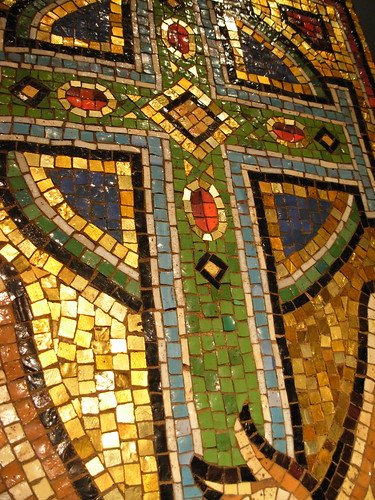 As soon as I heard about Walls Speak: The Narrative Art of Hildreth Meiere, I knew I had to make a pilgrimage. As I have written, Meiere’s mosaics at the Wernersville Jesuit Spiritual Center were the first mosaics to catch my eye, and set the desire in my heart to make them. Because mosaic and murals are often part of architecture, it’s a challenge to do an exhibit in a museum.
As soon as I heard about Walls Speak: The Narrative Art of Hildreth Meiere, I knew I had to make a pilgrimage. As I have written, Meiere’s mosaics at the Wernersville Jesuit Spiritual Center were the first mosaics to catch my eye, and set the desire in my heart to make them. Because mosaic and murals are often part of architecture, it’s a challenge to do an exhibit in a museum.
St. Bonaventure University’s Regina Quick Center for the Arts is the host of this first major retrospective of Meiere’s work. To develop as full a representation as is possible, the exhibit ranges from photographs of her installations at the Cathedral Basilica of St. Louis, the Prudential Building in Newark, NJ, and the Nebraska State Capitol Dome, plus sketches, a smalti sample board, and Triptychs for the Armed Services, and sample mosaics from the Cathedral Basilica of St. Louis project.
I was fascinated by the Triptychs which were from World War II. Meiere organized a group of artists to paint over 500 Triptychs for Catholic, Protestant and Jewish worship in the field during the war, painting 70 of them herself. The portable altars are like a morsel of the church in the midst of destruction, and I can’t even imagine what the experience might be like to worship in a war zone.
St. Bonaventure University’s buildings is are a tile lover’s dream, with “Italian Transitional” architecture with red roof tiles, and bas relief plaques. And Olean, NY was also home to the American Olean Tile Company, which coincidentally had a factory here in Lansdale as well. In addition there was a sculpture of St. Francis by Beniamino Bufano at the Regina Quick Center, the artist I discovered while writing about Martin Luther King Day.
If you have the chance, go check it out before June 13th, when the Meiere exhibit ends.
Related Post:
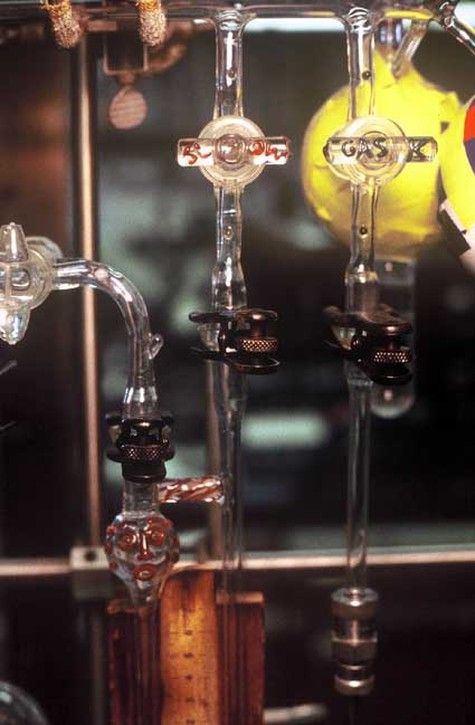
March 24th was Ada Lovelace Day. According to the site, Finding Ada, Ada Lovelace was one of the world’s first computer programmers, and one of the first people to see computers as more than just a machine for doing sums. She wrote programmes for Charles Babbage’s Analytical Engine, a general-purpose computing machine, despite the fact that it was never built. She also wrote the very first description of a computer and of software.
Bloggers from around the world wrote about a woman in science or technology on the 24th. I had planned to be one of them but after a day at a craft show, I completely forgot. I chose Sally Prasch, scientific glassblower. I didn’t even know that such an occupation existed. Scientific glassblowers make custom glass laboratory equipment for chemists, and have their own professional American Scientific Glassblowers Society. East Carolina State has an interesting page of resources describing the work.
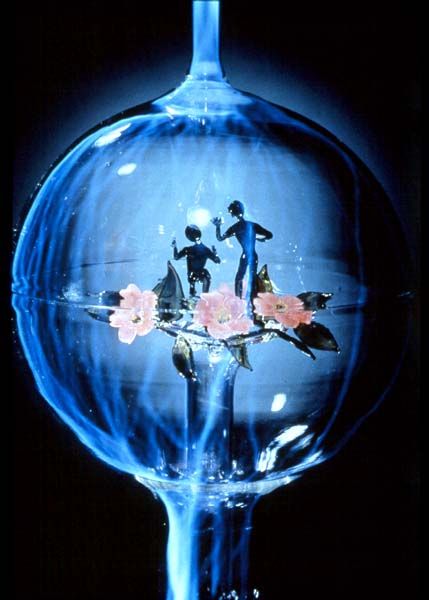
Sally Prasch took a flameworking class at 13 years old, and loved it, and went on to apprentice with a scientific glassblower. She went on to get a degree in Scientific Glass Technology from Salem Community College in Carney’s Point, NJ. This is the essence of Ada Lovelace day, the possibility of women discovering what they love to do, and being able to pursue it. There are only about 700 scientific glassblowers, and Prasch is among a handful of women in the field. She also creates artistic glass, bridging the worlds of science and art.
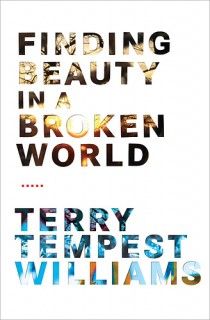 When I found out that Terry Tempest Williams had written a book on mosaic, I anticipated the loveliness of a fluid writer approaching one of my favorite subjects, but I was still awed by how wonderfully she captures mosaic as an art form, and as a way to find beauty in a broken world. She begins with a quote, “The very language of tesserae tells us that this harmony is only achievable through the breaking and then rediscovery of the mosaic fragments” Natascia Festa, Nittola. Then she wrote a kind of poetry:
When I found out that Terry Tempest Williams had written a book on mosaic, I anticipated the loveliness of a fluid writer approaching one of my favorite subjects, but I was still awed by how wonderfully she captures mosaic as an art form, and as a way to find beauty in a broken world. She begins with a quote, “The very language of tesserae tells us that this harmony is only achievable through the breaking and then rediscovery of the mosaic fragments” Natascia Festa, Nittola. Then she wrote a kind of poetry:
A mosaic is a conversation between what is broken.
A mosaic is a conversation that takes place on surfaces.
A mosaic is a conversation with light, with color, with form.
A mosaic is a conversation with time.
Tempest Williams immerses herself in mosaic, using her eyes and hands to fully experience the process, which then she expresses in her insightful words. I wrote poetry for many years, and to hear Williams bridging the distance between my love of words and my love of mosaic, is like a homecoming. She describes a conversation with one of her teachers, Marco De Luca:
De Luca explains the method. Our eyes are convex, not flat, so curved surfaces like the niche in a church provide a “place to rest our eyes.” He pauses, “I call this an embrace. In mosaics, it is in the curve that light is reflected–for me, this translates into a spiritual space.”
See an object is really about listening. He cradles his hands close to his mouth to explain. Art, by its nature, is expressive and creates this emotional reaction in the public. When my eyes are turned outward and inward at the same time, this is where I find my depth.(emphasis mine)
The public is used to figurative mosaics, representational mosaics, mosaics as paintings. He shakes his head. “I wanted to find the essential features of mosaic. I wanted to express my language of desire, making use of tesserae to express my emotions.”
I am interested in now in what my eyes can see, what my fingers can touch, what my hand can know by moving slowly across flesh, or fur, or feathers, or stone. I trust what I see. The surface of things is what we see. I trust what I touch. The surface of things is what we touch.
After learning about mosaics in Italy with teachers such as Luciana Notturni,Tempest Williams goes on to experience the mosaic transformations of Lily Yeh and the villagers in Rwanda she worked with to build a memorial at a mass grave in 2003.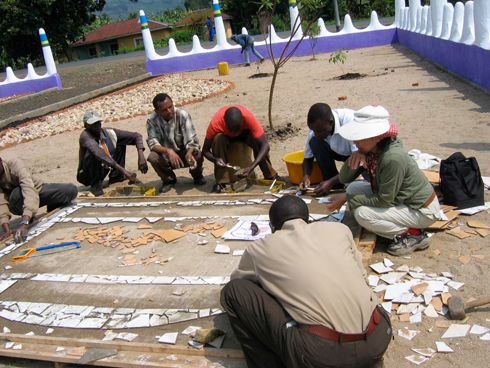 Lily Yeh started to work with the power of public art in 1986 Philadelphia! She brought together residents of neighborhoods in North Philadelphia to transform vacant lots and abandoned buildings with mosaic and painting, often transforming the lives of the residents as well, with the Village of the Arts and Humanities.
Lily Yeh started to work with the power of public art in 1986 Philadelphia! She brought together residents of neighborhoods in North Philadelphia to transform vacant lots and abandoned buildings with mosaic and painting, often transforming the lives of the residents as well, with the Village of the Arts and Humanities.
Beauty…comes to us with no work of our own; then leaves us prepared to undergo great labor.
Elaine Scarry, On Beauty and Being Just.
Tempest Williams includes the above quotation from Scarry, and encourages us to take courage in beauty, to turn inward and outward at the same time.